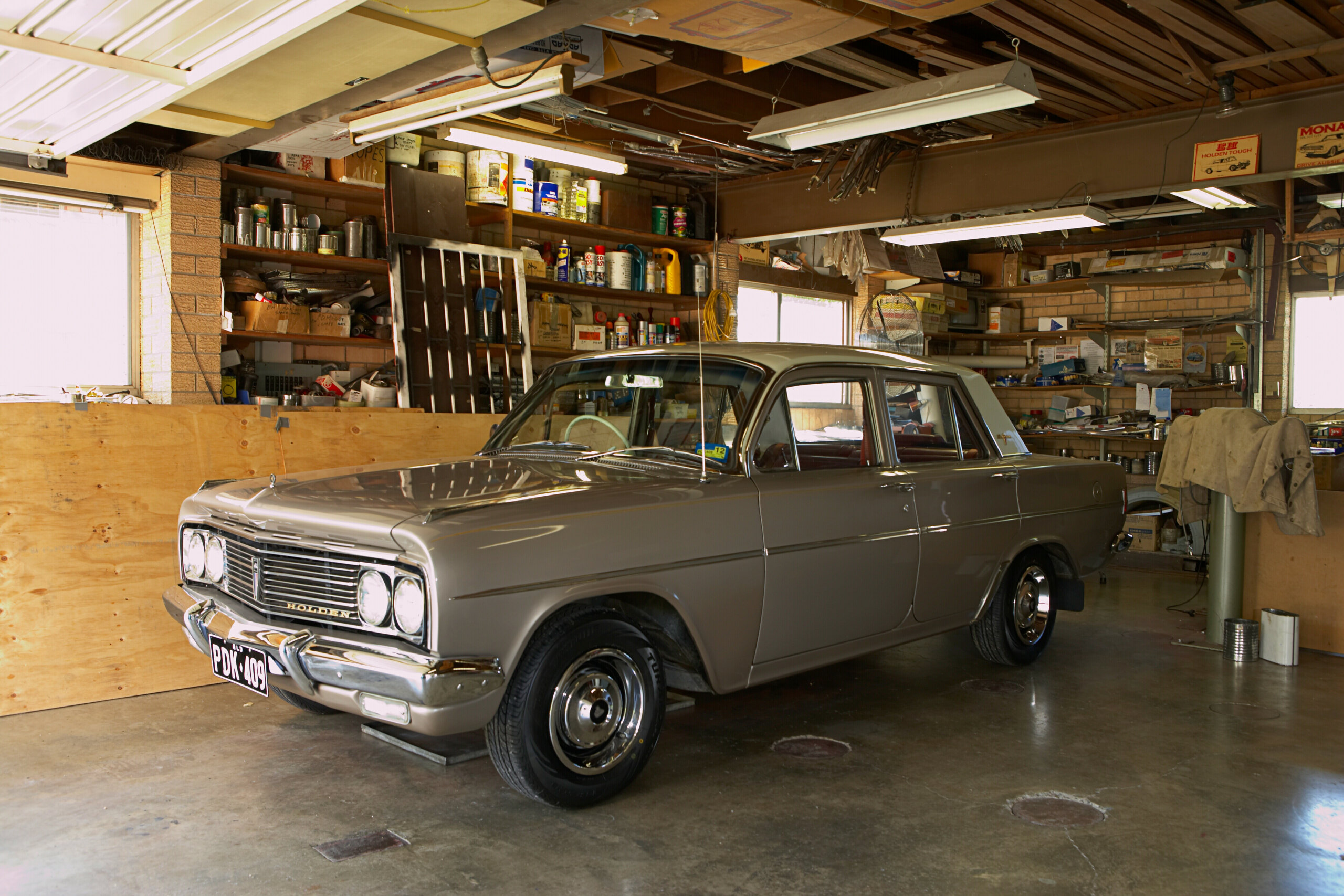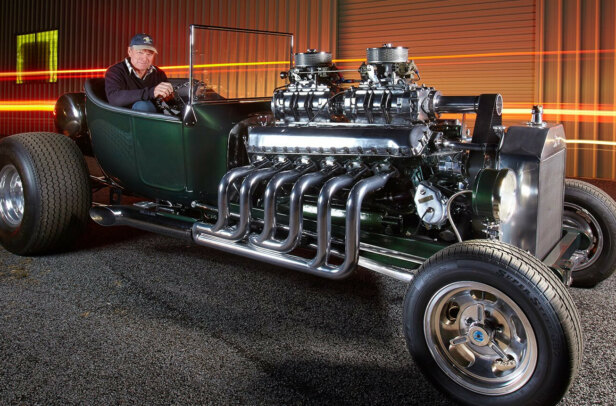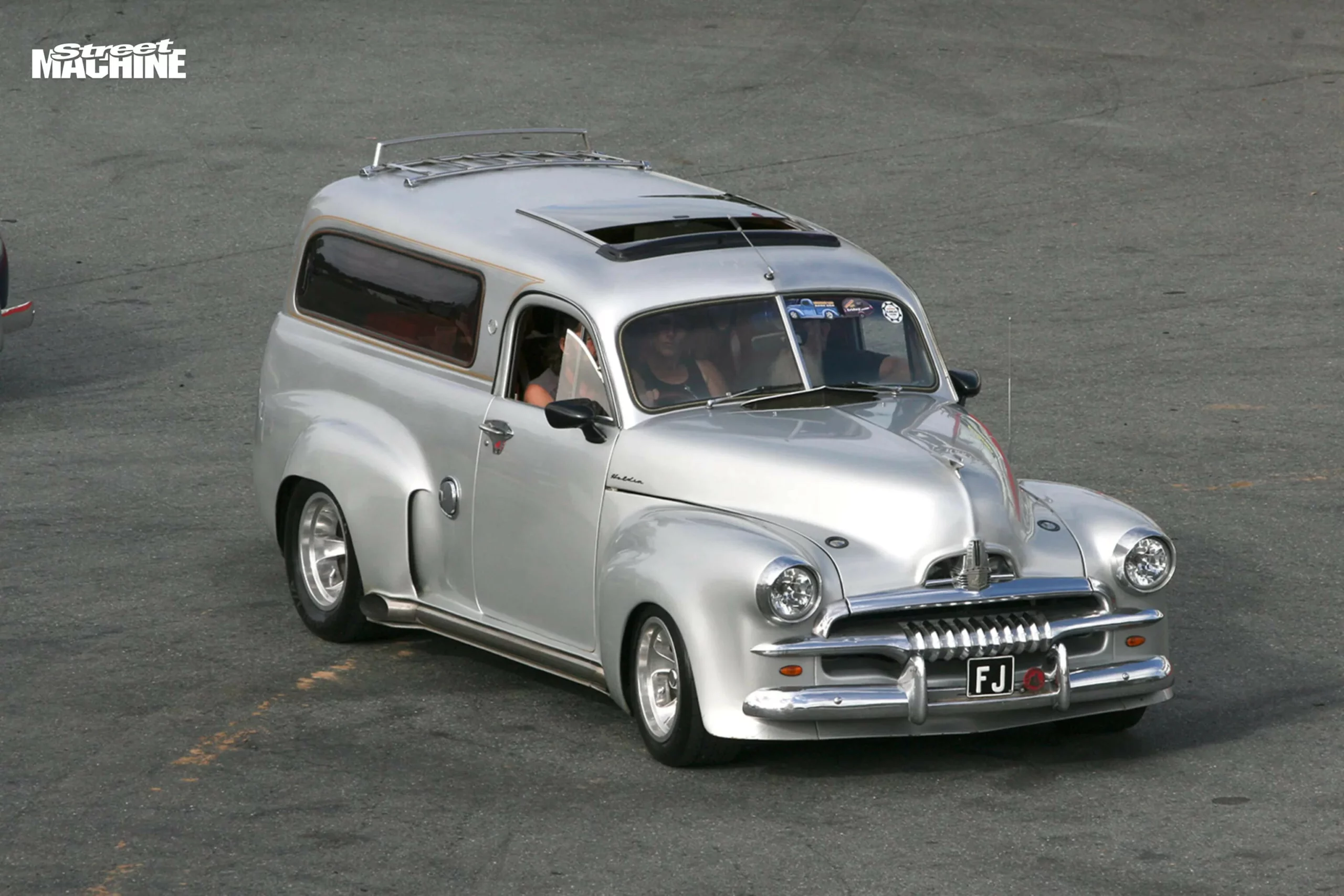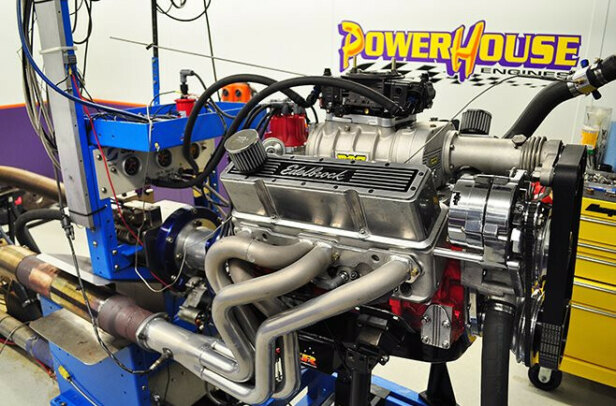Val Neil may not be the biggest name on the automotive scene but his work adorns hundreds of top-level restorations, street machines and custom projects around the country. He’s one of a handful of gifted tradesmen able to repair or replicate the stainless and alloy bright-ware that has adorned motor cars since they were first made. Perfect paint and panel is one thing but if the trim isn’t perfect, the end result can be very disappointing.
First published in the February 2008 issue of Street Machine
From the outside, Val’s shed is part of a neat 70s home but inside lies some pretty trick stuff. Parked on one side is an EH Premier like no other, and surely one of Australia’s oldest surviving customs. Val bought the car when it was four years old and set about transforming it into a unique custom that has served as his daily driver for 40 years. The idea was to build a car that people would recognise as an EH but with more modern styling. In doing so, he eschewed the custom trends of the day and built a car that is commonly mistaken for a GMH prototype or export model — the ultimate compliment!
Val served his apprenticeship in the early 60s at a small local panel shop that carried out specialist work, like building hearses and station wagons on locally made Customline sedans. So his hands-on skills were honed on custom fabrications of all types in a time where everything was made in-house. Later the business expanded into building buses and luxury coaches, where he picked up more skills.
During this time he bought and personalised an FX sedan but after some years he wanted to move on as there were places outside Queensland to be seen, and wider experiences to be had, so he gave notice. With his severance pay and savings he loaded the FX onto a boat and headed to New Zealand where he travelled and worked for two years.
He returned home without the FX, which was when the EH came into his life. It became the base to showcase his abilities but at all times his training, grounded in practicality and function, dictated how he went about it.
Valiant tail-lights suited the height of the quarter panels and could be extended to look like full-width lights, matched to ’63 Dodge Phoenix indicators and reversing light. The rear light buckets were hand-formed, as were the sections to modify the upper and lower boot panels. That done, the quarter panels were split in half and new upper sections were rolled and folded to remove the swage line and the ‘mess’ of the original tail-light positioning. The result was an EH with a smooth, flowing shape from front to rear.
The rear bumper was constructed using two factory units, cut and shut to make two separate sections. A piece of ribbed aluminium was cut and folded to suit the panel between the tail-lights, and then anodised gold.
“People often think I’ve cut the back end off a Valiant and welded it on,” he smiles.
The front section is based on the then-new HK Brougham’s grille and headlights. The fronts of the original guards were cut out and new sections made to blend in with the headlight surrounds and guard moulds. A new panel was also fabricated to fit between the top of the grille and the bonnet.
The front stone tray and the bumper were both modified to match the new, peaked front. Special indicator surrounds were made and chromed to finish it off. The rest of the car is a beautifully preserved piece of Australian motoring history that has served its owner tirelessly for the past 40 years.
Another beaut feature in the shed is Val’s own body-straightening system, which would have rivalled any shop in Brisbane at the time, yet when it’s not required, it’s invisible. The walls are covered in shelves with all types of mouldings and patterns hanging down, and containers of clips and special brackets that long ago became extremely rare beasts. On benches are jigs and special handmade tools that are used to repair or remake moulds.
In the late 80s, Val’s skills were used to repair some unavailable older mouldings on an accident-damaged car in the shop; when other repairers heard about what was possible, people started seeking him out to work his magic.
After decades spent in other people’s employ, Val retired from the smash repair industry and has since concentrated on specialising in moulding repairs — a well-timed move, given the recent interest in Australian muscle cars.
Since every owner wants their car to be perfect, he’s been inundated with work and he has developed special methods for restoring many components; for others, he makes copies that no-one could pick from originals.
These days he specialises only in muscle car mouldings and fittings and he still has a two-year waiting list! Retirement is on the cards — but he’s been saying that for a few years now.




Comments